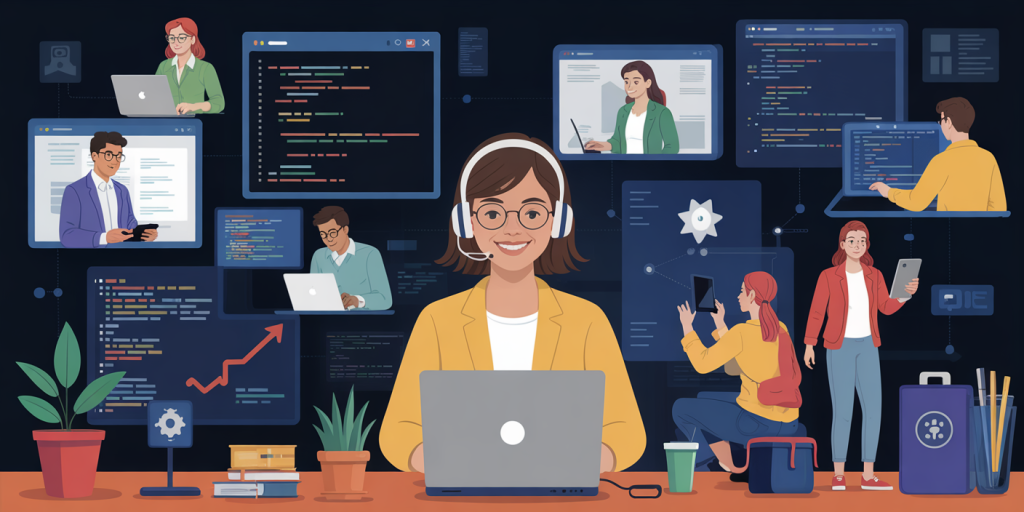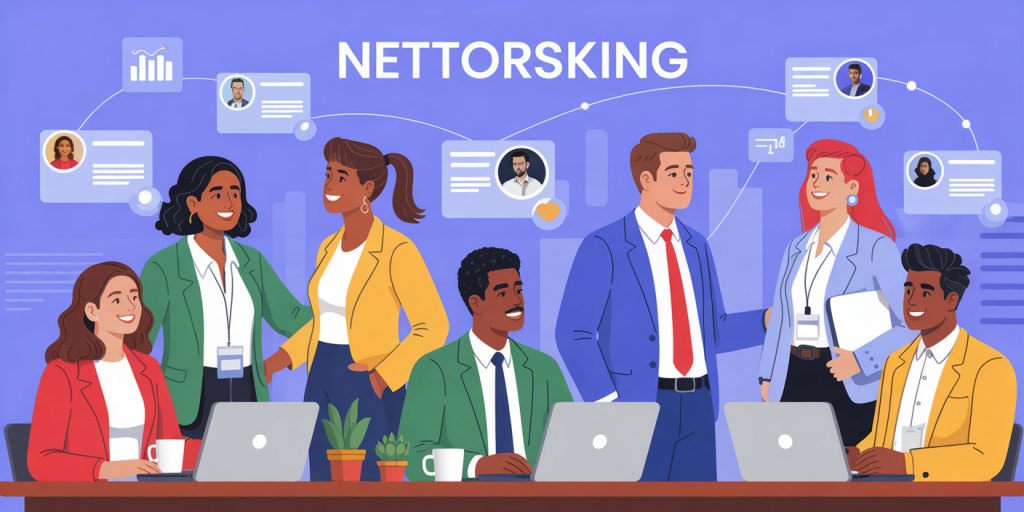Career Transitions Made Easy: Switching Paths Without Starting Over
In today’s fast-paced and ever-evolving job market, career transitions have become increasingly common. Whether driven by the desire for personal fulfillment, better financial prospects, or adapting to changing industry demands, many professionals find themselves considering a switch in career paths. However, one of the most intimidating aspects of making such a shift is the fear of starting from scratch — losing years of experience and hard-earned credentials can seem like a daunting prospect. Fortunately, transitioning between careers does not necessarily mean beginning anew. With a strategic approach, leveraging transferable skills, and utilizing available resources, professionals can switch industries while capitalizing on their existing expertise.

The landscape of career transitions is becoming more favorable due to several factors. Lifelong learning is no longer just a catchphrase; it has become essential, supported by the proliferation of online courses and certification programs. According to LinkedIn’s 2023 Workplace Learning Report, 57% of professionals worldwide upgraded their skills in 2022 to prepare for a career change or advancement. Additionally, the rise of hybrid and remote work models has broken geographical barriers, opening new opportunities previously unavailable. Understanding how to navigate this terrain can empower individuals to embrace change confidently without the fear of starting over.

Leveraging Transferable Skills for a Smooth Shift
One of the core principles of successful career transitions is identifying and capitalizing on transferable skills—that is, abilities and competencies acquired in one job that are valuable in another. Examples include communication, project management, leadership, analytical thinking, and problem-solving. These core skills often transcend industry boundaries, making them incredibly useful assets when switching careers.
For instance, consider the case of Maria Lopez, who transitioned from sales to digital marketing. Despite transferring industries, her communication skills, ability to understand customer pain points, and expertise in relationship management became crucial in her new role managing social media campaigns and client interactions. Similarly, technical skills such as proficiency in Microsoft Excel or experience with data analysis are relevant in finance, marketing, healthcare, and more.
To identify transferable skills effectively, professionals should map their previous job responsibilities against the requirements of their target role. Tools like transferable skills assessments and online platforms such as O*NET can help evaluate job profiles and uncover overlapping competencies. This reflection and analysis streamline the transition and highlight existing strengths that employers value.
Enhancing Employability Through Strategic Upskilling and Reskilling
While transferable skills provide a sturdy foundation, in many cases, transitioning professionals need to update or acquire new knowledge to qualify for their target roles. This is where upskilling (improving current skill sets) and reskilling (learning entirely new skills) come into play. The world is witnessing rapid technological advances requiring continuous learning. According to the World Economic Forum’s Future of Jobs Report 2023, 50% of employees worldwide will need reskilling by 2027 due to evolving job requirements.
Upskilling can be as simple as taking an online course or gaining proficiency with a new software tool relevant to the intended role. For example, a graphic designer moving into UX design might need to learn user research methods and wireframing tools. Reskilling is a bigger leap but increasingly accessible through intensive boot camps, certification programs, or formal education.

Take the example of Jake Thompson, a mechanical engineer who wanted to switch to data science. Jake invested six months in an online data analytics boot camp and earned a certification in Python programming and machine learning. His existing analytical mindset and problem-solving capabilities made his learning curve manageable, and he secured a position as a junior data analyst without needing to pursue a full second degree.
The table below summarizes common career switches alongside relevant upskilling or reskilling focus areas:
| Current Field | Target Field | Key Skills to Upskill/Reskill | Typical Learning Duration |
|---|---|---|---|
| Sales | Digital Marketing | SEO, SEM, content marketing, analytics | 3-6 months |
| Mechanical Engineering | Data Science | Python, statistics, machine learning | 6-12 months |
| Teaching | Instructional Design | E-learning tools, multimedia software | 3-6 months |
| Finance | Project Management | Agile methodologies, risk management | 3-6 months |
| Retail Management | Human Resources | Employee relations, HR analytics | 3-6 months |
Networking as a Catalyst in Career Switching
Networking plays a pivotal role in career transitions, often bridging the gap between current roles and new opportunities. Building relationships within the target industry helps understand market demands, company culture, and job openings that may not be publicly advertised. In fact, a 2022 survey by Jobvite found that 70% of jobs are filled through networking and referrals.
For newcomers to a field, engaging in industry conferences, webinars, and professional associations allows them to gain insider knowledge and showcase their enthusiasm. Online platforms like LinkedIn also facilitate virtual networking, enabling professionals to connect with mentors, recruiters, and peers worldwide.
A practical example is Sophie Chen, who switched from journalism to corporate communications. By attending local PR meetups and connecting with professionals on LinkedIn, she garnered mentorship and job leads. This personal network provided advice on relevant certifications, interview tips, and even referrals, helping her secure her first communications role quickly.
Additionally, graduates of career transition programs often point to peer support and alumni networks as confidence boosters and sources of practical guidance. Being part of communities aligned with the intended career can facilitate learning and open doors faster than solo efforts.
Overcoming Psychological Barriers and Building Confidence
Beyond skills and connections, an often overlooked obstacle in career transitions is the psychological barrier: fear of failure, imposter syndrome, or anxiety about leaving comfort zones. These mental hurdles can derail even the most strategically planned shifts unless addressed appropriately.
Mindset coaching, counseling, or support groups specifically tailored for career changers can help individuals reframe their experiences in a positive light. Real-life story-sharing helps normalize challenges and builds resilience. For example, a study conducted by the American Psychological Association (APA) in 2023 found that 64% of career changers experienced reduced anxiety and higher self-efficacy after participating in structured support programs.
Practical strategies include setting small, achievable goals, celebrating incremental progress, and maintaining a robust work-life balance during the transition period. Case in point: Dan Miller, a former corporate lawyer who transitioned to entrepreneurship, credits his success to systematic goal setting and working with a career coach that helped him overcome doubts and embrace uncertainty.
Future Outlook: Embracing Lifelong Career Fluidity
The future of work will be characterized by greater career fluidity, with professionals transitioning between multiple roles and industries throughout their lives. The Organisation for Economic Co-operation and Development (OECD) projects that average career changes per individual may increase from 3-4 times today to 6-7 times by 2040. This evolution places a premium on adaptability, continuous learning, and the ability to leverage past experiences effectively.
Employers are also shifting toward valuing versatile talent over narrowly specialized expertise. Hybrid roles that combine skill sets from different fields are becoming the norm. For example, “data storytellers” who merge analytical skills with communication capabilities are highly sought after.
Technology will further lower barriers to transition. Artificial intelligence-powered career advisors, personalized online learning pathways, and virtual reality training environments promise more customized, efficient, and inclusive career development solutions. This democratization of upskilling combined with social support systems will empower even mid-career professionals to pivot confidently without fearing starting from scratch.
In essence, career transitions made easy are no longer just aspirational but attainable realities. Strategic skill mapping, upskilling, networking, psychological readiness, and embracing future trends create a robust framework for seamless career evolution that honors past achievements while opening doors to exciting new opportunities.
